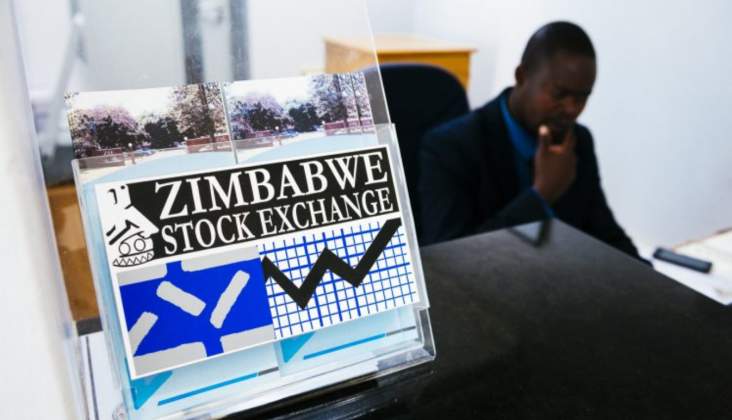Zimdollar woes leave banks jittery
Income from banks’ core businesses has plummeted as banks adopt a more cautious approach in lending given the volatility of the local currency, a latest report shows.
According to the Reserve Bank of Zimbabwe’s latest quarterly report ended September, 30, 2023, funded income constituted only 10 percent of the sector’s revenue.
The figure is considerably lower than the 46 percent of interest income generated by the banks’ core business, excluding income from investments and securities eight years ago.
These revelations emerge as some local banks, concerned of the local currency’s high-risk profile, have adopted a cautious lending approach using the Zimbabwean dollar.
The local unit has depreciated roughly 60 percent against the US dollar since December 12, 2023.
On that date, the exchange rate was 5 903 to US$ 1, but it has now fallen to 9 414.
Harare-based economist, Dr Prosper Chitambara, said the banks were holding back on loans due to inflation as lending under such conditions often results in losses.
Chronic inflation, he said creates a risky lending environment as Zimbabwean dollar loans can easily become unprofitable, thereby discouraging banks from extending credit.
“I think most banks have not been lending as much, owing to the chronic inflationary environment, which actually means that if you are lending in Zimbabwe dollars in a high inflationary environment, you are effectively making a loss on that loan.
“And also, the uncertainties around the currency have also reduced the appetite of most financial institutions to lend. Obviously, that has also affected their interest income.
“We are seeing that non-interest income is actually now more predominant because of the high inflation and uncertainties around the currency issue,” said Chitambara.
During the first nine months of 2023, non-interest income, constituting roughly 88 percent of total revenue, was the primary driver of profitability for the banking sector.
Surging revaluation gains, accounting for 24 percent of non-interest income, eclipsed fees and commissions (17 percent) as the dominant drivers of bank profitability.
Another indicator of limited lending by banks is the low loan to deposit ratio. For the third quarter to September 2023, the loan to deposit ratio was slightly above 50 percent against an average international benchmark of 80 percent.
The loan-to-deposit ratio (LDR) is a key measure of a bank’s liquidity and risk profile. It compares the total amount of loans a bank has issued to the total amount of deposits it holds. It’s essentially a percentage that tells you how much of its depositors’ money the bank is lending out.
“It balances profitability with liquidity and risk management. However, factors like regulations, economic conditions, and bank size can influence what’s considered optimal,” said equity analyst Walter Mandeya.
Batanai Matsika, another economic analyst said concerned about non-performing loans, the banks have tightened their purses, leaving businesses to seek alternative funding options.
He said the cautious lending underscores elevated economic risks and concerns around bad loans.
Matsika argued the current state of affairs in the sector is detrimental, stifling economic growth.
“It limits productivity for businesses which require funding to grow. But even so, it is a reflection of the risk level the economy is on and risk of non-performing loans,” Matika said.
“Most banks have become conservative and are not lending much to the broader economy due to the risk of NPLs, which means businesses have to go to alternative sources of funding. It could also be a result of liquidity issues within the economy and with all these other risks, that will disrupt the traditional way of banks doing business.”
According to economist, Eddie Cross, the current banking environment, far from the norm, presents significant challenges for banks striving to remain financially viable.
“I think if our banking environment was more normal and operated on a freer market basis, I think they would very much welcome returning to a more conventional means of making money through investing surplus funds,” said Cross.
“But in the present circumstances where their capital base has been eroded by inflation over the years, sometimes even wiped out, the bulk of their assets, their liquid assets are on short-term deposit. They are not able to lend money significantly.
“They are certainly not able to lend more than, I don’t know, 60 percent of what they have deposited.
This means with a very low ratio of lending limits; they have to find alternative means of making money. And the banking fees are the way they have gone.”
Cross, a former member of the RBZ’s Monetary Policy Committee, said the ability of banks to fund businesses and profit from their core function, was vital for economic growth. However, the current circumstances pose significant hurdles to achieve this.
“We need the banking sector to perform its normal functions of funding the private sector and earning money from lending. But that is very difficult under present circumstances,” said Cross.
The consequences of this cautious lending approach are being felt across the Zimbabwean economy.
Businesses, particularly small and medium-sized enterprises (SMEs), are struggling to secure loans for essential operations and expansion.
A recent survey by Business Weekly revealed a stark shift in lending preferences by banks.
In a move to insulate themselves from potential losses, a significant number of banking institutions are opting for US dollar loans over loans denominated in the volatile Zimbabwean dollar. This trend raises concerns about further marginalisation of the local currency and potential stifling of economic activity.
“The current inflationary environment coupled with the unpredictable nature of the local currency create a high-risk scenario for banks lending in Zimbabwe dollars,” said Carlos Tadya, a Harare based economist. “By focusing on US dollar loans, banks are essentially playing it safe and minimising their exposure to potential losses.”
The consequences of this shift are already being felt.
Businesses, particularly those heavily reliant on local currency financing, are facing difficulties securing loans, further hampering economic activity.
This preference also creates an uneven playing field, potentially benefiting larger firm with access to foreign currency, leaving smaller businesses, primarily reliant on the local currency, at a disadvantage.
Farai Mutambanengwe, founder and executive officer of SME Association Zimbabwe, said for most micro to small businesses, securing Zimbabwe dollars is pointless, as they ultimately seek to convert them to United States dollars for essential imports.
However, accessing US dollar credit from the banks is equally challenging due to the lack of collateral security among many micro to small businesses.
-ebusinessweekly











